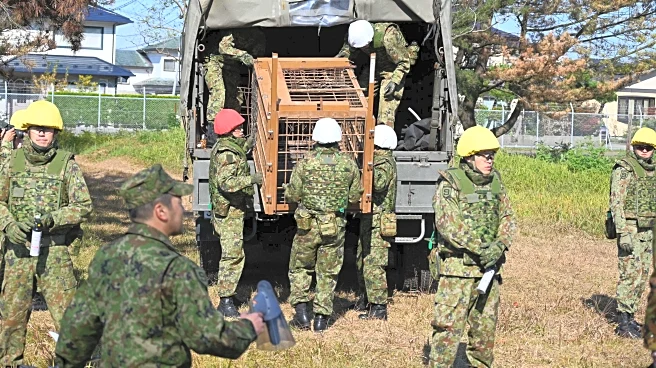What's Happening?
Japan has deployed troops to the northern prefecture of Akita to manage a surge in bear attacks that have been terrorizing residents. The deployment follows reports of frequent encounters with brown and
Asiatic black bears, which have been seen near schools, train stations, and supermarkets. Since April, over 100 people have been injured and at least 12 killed in bear attacks across Japan. The growing bear population is encroaching into residential areas, exacerbated by a rapidly aging and declining human population with few trained hunters. The Defense Ministry and Akita prefecture have agreed to deploy soldiers to set traps, transport hunters, and dispose of dead bears, without using firearms.
Why It's Important?
The deployment of military forces to manage wildlife issues highlights the severity of the bear attacks in Japan. This situation underscores the challenges faced by regions with declining populations, where traditional methods of wildlife management are insufficient. The bear attacks have disrupted daily life, forcing residents to alter their routines and cancel events. The government's intervention is crucial to ensure public safety and address the ecological imbalance caused by the growing bear population. The situation also calls attention to the need for more trained hunters and better wildlife management strategies.
What's Next?
The government has set up a task force to develop an official response to the bear problem by mid-November. This includes conducting bear population surveys, issuing bear warnings, and revising hunting rules. The lack of preventive measures has led to an increase in the bear population, necessitating urgent action. Local authorities are desperate for solutions, and the military's involvement is a temporary measure until more sustainable strategies are implemented.
Beyond the Headlines
The bear attacks in Japan reflect broader issues of rural depopulation and environmental changes. As climate change affects food availability, bears are increasingly venturing into human habitats. This situation raises ethical questions about wildlife management and the balance between human safety and animal conservation. The aging population in rural areas further complicates the ability to manage wildlife effectively, highlighting the need for innovative solutions.













